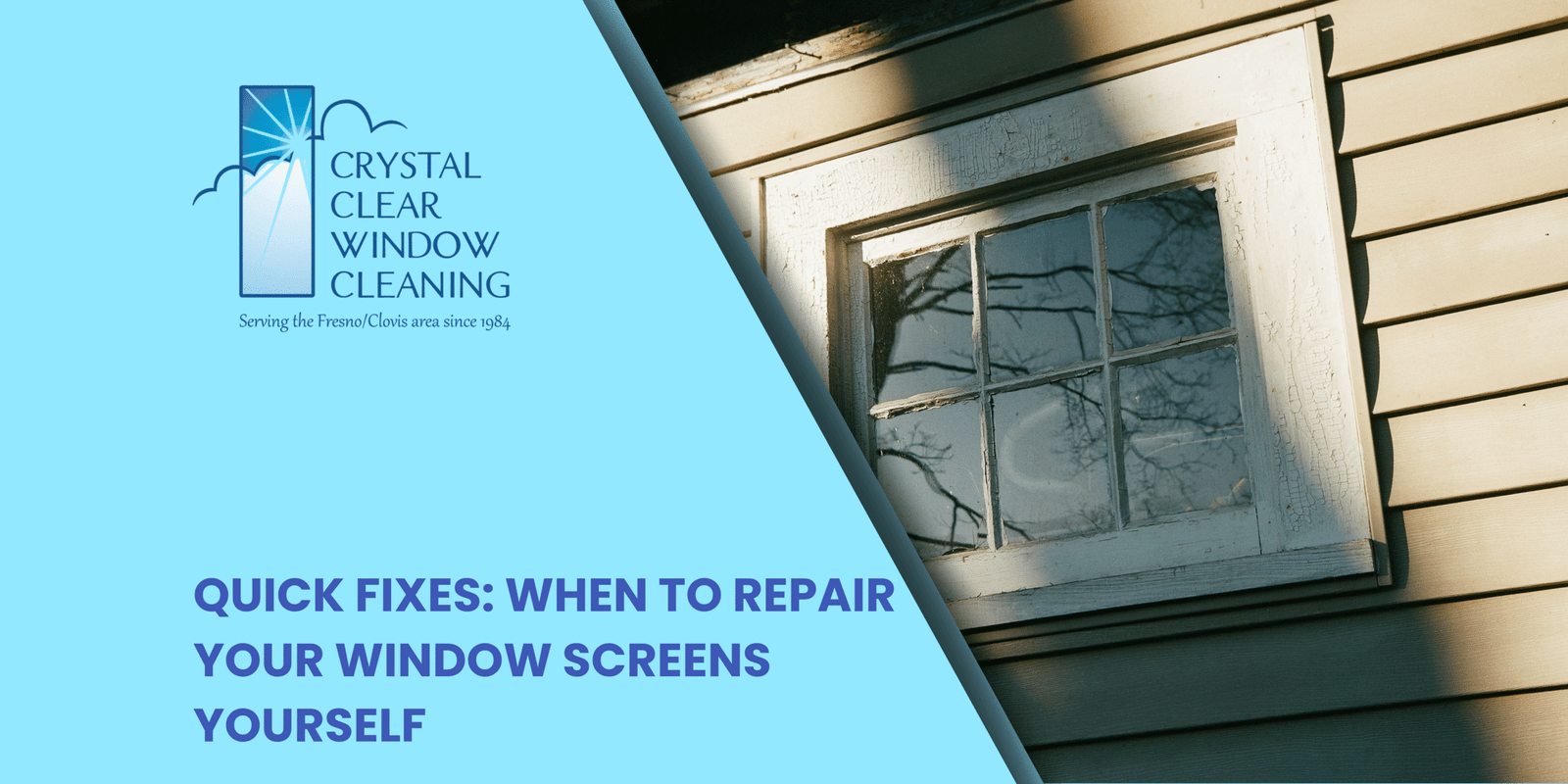Know When to DIY Your Window Screen Repairs
Window screens are essential for keeping insects out while letting fresh air in. But over time, even the sturdiest screens can suffer from tears, loose edges, or sagging. If your screen is damaged, you might wonder whether to call a pro or handle the repair yourself.
The good news? Many screen issues can be resolved quickly and affordably with DIY fixes, saving you money and extending the life of your window hardware. This guide will walk you through when and how to repair window screens yourself, and when it’s better to replace them entirely.
1. Small Holes or Tears? Patch Them Yourself
One of the most common screen problems is small holes caused by pets, kids, weather, or age. If the tear is smaller than 3 inches, you can fix it yourself without replacing the entire mesh.
Fix it with:
- Adhesive screen patches: Pre-cut mesh patches with sticky backing
- Screen repair tape: Durable tape designed specifically for mesh material
- Sewing method: Use nylon thread to stitch closed small tears on fiberglass screens
Be sure to trim any frayed edges before applying a patch to ensure it sticks properly.
2. Loose or Sagging Screens? Re-Tighten the Frame
If your screen looks droopy or is pulling away from the frame, it might not be torn; it may just need to be re-secured. Over time, screen mesh can loosen due to sun exposure, weather, or poor installation.
Fix it by:
- Removing the screen from the window
- Pulling the mesh taut across the frame
- Pressing it back into the groove with a spline roller and replacing the spline if needed
This is a simple fix that can restore the look and function of your window screen in under 30 minutes.
3. Bent Frames? You Might Still Be Able to Repair
Aluminum screen frames can bend if hit or dropped. If the damage is minor, such as a small warp or dent, you can often bend it back into shape using pliers and a flat surface.
Steps:
- Remove the screen from the window
- Use a towel-wrapped pair of pliers to gently straighten bends
- Realign the corners and check for frame stability
If corners are broken or the frame is severely bent, it’s usually best to replace it altogether.
4. When to Replace the Mesh Entirely
If your screen has large rips, brittle mesh, or multiple tears, a patch won’t be enough. Instead, you can replace just the screen mesh and keep the frame.
Here’s how to do it:
- Measure your frame to buy the correct mesh size (fiberglass or aluminum)
- Remove the old spline and mesh
- Lay the new mesh over the frame
- Roll a new spline into the groove to secure it
- Trim excess mesh with a utility knife
This approach is more cost-effective than buying a new screen and helps preserve your existing frames.
5. Tools You’ll Need for DIY Screen Repair
For successful repairs, having the right tools makes all the difference.
DIY screen repair kit essentials:
- Replacement mesh
- Spline and spline roller
- Utility knife or scissors
- Screen patch or repair tape
- Screwdriver (if frame needs disassembly)
- Pliers (for adjusting bent frames)
You can find affordable kits online or at most home improvement stores.
6. Types of Screen Mesh: Choose the Right One
When replacing or repairing mesh, make sure you choose the right type for your window needs.
Common mesh types:
- Fiberglass mesh: Easy to install, flexible, and rust-resistant
- Aluminum mesh: Durable and long-lasting, but can kink or bend
- Pet-resistant mesh: Thicker material designed to withstand claws
- Solar screen mesh: Helps block heat and UV rays for energy efficiency
Matching your replacement mesh to your home’s needs ensures durability and better performance.
7. When to Call a Professional

Not every screen issue is a good fit for DIY. You should consider calling a pro if:
- The frame is rusted, broken, or severely warped
- You have custom-shaped or oversized screens
- The window hardware is damaged
- You don’t have the time or tools to complete the repair
Hiring a professional ensures a perfect fit, fast turnaround, and a long-lasting result, especially for complex screen types like retractable or storm screens.
8. Preventing Future Damage
Once your screen is repaired, you’ll want to prevent future problems. Simple maintenance can go a long way.
Tips:
- Keep pets from clawing or pushing against screens
- Avoid slamming windows
- Rinse screens with a garden hose once a season
- Store removable screens indoors during the winter months
- Inspect annually for signs of wear
Regular care extends the life of your screens and reduces how often you need repairs.
Final Thoughts
Window screens are easy to overlook until they’re torn, loose, or letting bugs in. Fortunately, most minor issues can be handled with quick DIY fixes using simple tools and low-cost materials. With a little care and attention, you can keep your screens in excellent condition and your home properly ventilated.
Whether you’re fixing a tiny tear or replacing an entire screen mesh, doing it yourself is easier than you think and worth the effort.
Call to Action
Need help deciding whether to repair or replace? Contact our team for expert advice and affordable repair solutions tailored to your home.

